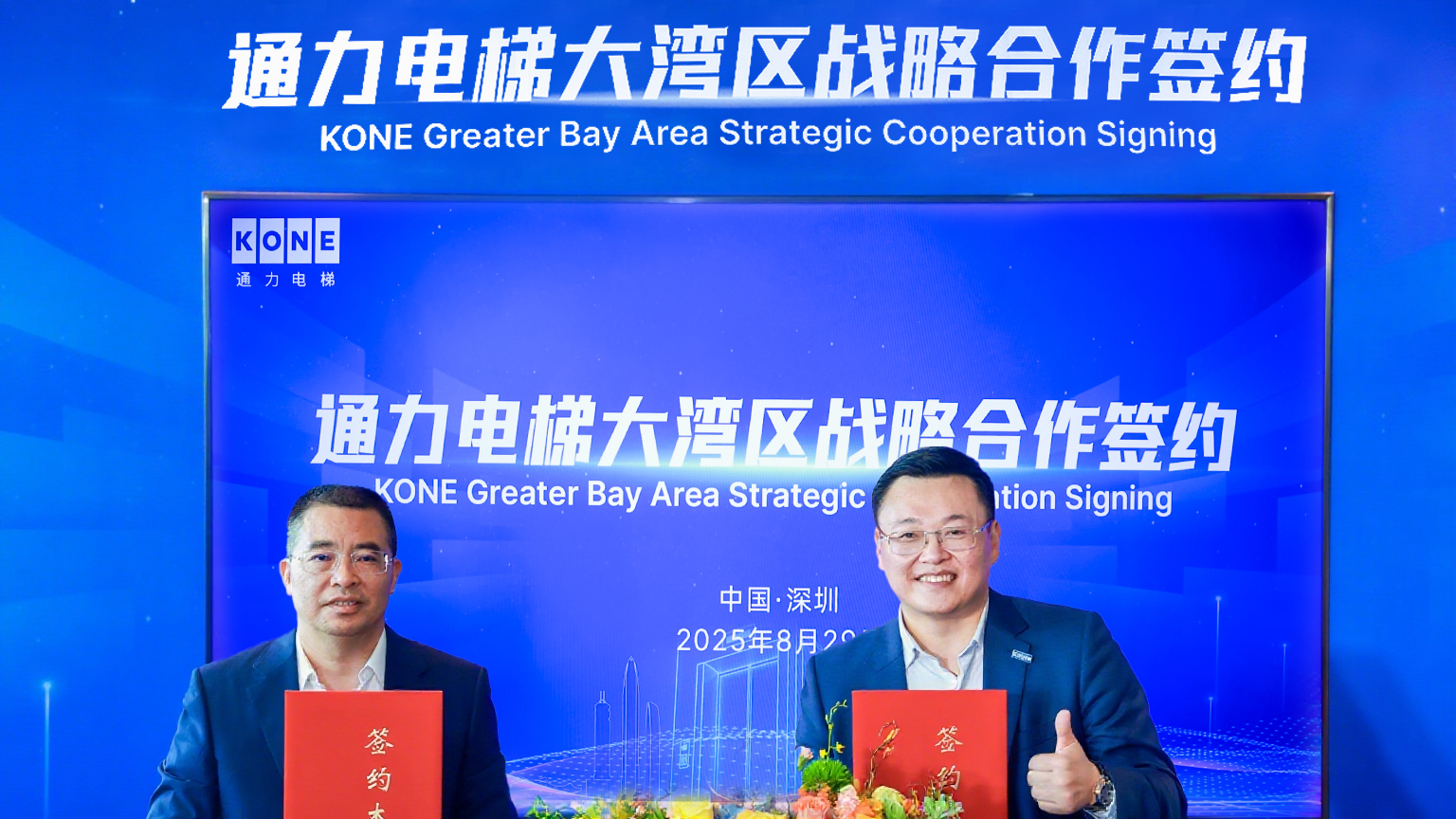
Finnish elevator and escalator company Kone announced on Friday that it will expand its footprint in the Guangdong-Hong Kong-Macao Greater Bay Area (GBA), betting big on the region’s robust economic growth and urban renewal drive to fuel demand for equipment installation and renovation.
The company will establish its China Southern Headquarters in Qianhai special economic zone of Shenzhen, along with its base in Kunshan, eastern Jiangsu province, to form a “dual-headquarters” model in China. The new hub, which is scheduled to start operation in early 2026, will focus on regional market development, customer services and resource integration.
It will also set up a dedicated research and development center, and a smart logistics and assembly center in the Guangdong city. The smart logistics center is expected to come into operation in October.
READ MORE: GBA accounts for 60% of overseas direct investment in China
“The Greater Bay Area is among the most dynamic and innovative regions in China. Qianhai, as a pivotal platform for Shenzhen–Hong Kong collaboration, offers a robust industrial ecosystem, strategic location, excellent connectivity, and strong policy support for cross-border cooperation,” said Joe Bao, executive vice-president of Kone Greater China.
“We look forward to leveraging these advantages to optimize resource allocation, accelerate industrial transformation, and support urban renewal across the Greater Bay Area cities.”
With robust economic growth and rapid modernization in the 11-city cluster, there is an increasing demand for elevator installation, maintenance and renovation, which presents enormous business opportunities for Kone, Bao noted. He estimated that over 100,000 elevators in Guangdong province as well as the special administrative regions of Hong Kong and Macao are aging units that have been in use for over 15 years.
The company will focus on using advanced technologies such as artificial intelligence (AI) and providing customized services to maintain its competitiveness in the competitive market, he added.
Eric Xie, senior vice-president of Kone Bay Region and managing director of Kone Hong Kong, said the establishment of a smart logistics and assembly center in Shenzhen will also improve its operation efficiency in Hong Kong.
“The industry is facing a shortage of professionals and high costs in Hong Kong. The building of the new center will help enhance our supply chain capability in the region, enabling us to deal with the pre-assembly process on the mainland, which will then cut the delivery time of renovated elevators in Hong Kong by 20 percent,” he said.
READ MORE: Why Greater Bay Area a must-watch for global businesses
Xie believes Hong Kong is a market with high potential given the large number of aging buildings there. According to him, the number of buildings over 50 years old is increasing at a rate of 510 every year. By 2043, the figure is expected to hit 2.43 million.
China had approximately 11.53 million elevators as of the end of last year, statistics released by the State Administration for Market Regulation (SAMR) in May showed. Of those, 900,000 were aging units that had been in use for over 15 years.
Other international industry players, including US firm Otis and Japanese enterprise Hitachi, are also raising their stakes in the Chinese market. According to a 2024 report from Qianzhan Industry Research Institute, foreign brands accounted for roughly 70 percent of the market share in the Chinese elevator industry.
Contact the writer at sally@chinadailyhk.com


